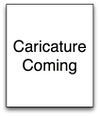Difference between revisions of "Tim Berners-Lee"
| Line 36: | Line 36: | ||
Berners-Lee developed the hypertext transfer protocol ([[HTTP]]), the language used in computers to communicate hypertext documents over the internet and the universal resource identifier ('''URI''') now called [[URL]] or uniform resource locator, a system used to locate documents by assigning a unique address while aiting for CERN to approve his proposal.<ref>[http://www.nndb.com/people/573/000023504/ Tim Berners-Lee Profile on NNDB tracking the entire world]</ref> | Berners-Lee developed the hypertext transfer protocol ([[HTTP]]), the language used in computers to communicate hypertext documents over the internet and the universal resource identifier ('''URI''') now called [[URL]] or uniform resource locator, a system used to locate documents by assigning a unique address while aiting for CERN to approve his proposal.<ref>[http://www.nndb.com/people/573/000023504/ Tim Berners-Lee Profile on NNDB tracking the entire world]</ref> | ||
| − | In 1990, [[Robert Cailliau]], a systems engineer who also had an independent proposal to develop a hypertext system joined Berners-Lee. He revised the proposal, collaborated with Berners-Lee on papers and presentations and advocated for funding and organized the first International World Wide Web Conference([[IW3C2]]). Tim and Robert presented their joint proposal to the CERN management. Mike Sendall bought a NeXT computer to evaluate the proposal. Tim developed the first web browser and the hypertext mark up language ([[HTML]]), an integrated editor used to create hypertext documents within one month using the NeXT compter. On May 1990, the first browser-editor was developed. Tim and Robert agreed to name it as the "World Wide Web." According to Robert, "During some sessions in the CERN cafeteria, Tim and I try to find a catching name for the system. I was determined that the name should not yet again be taken from Greek mythology. Tim proposes "World-Wide Web". I like this very much, except that it is difficult to pronounce in French..." On December 25, Tim launched the world's first web server and communicated with Robert through the first website (info.cern.ch) using the NeXT computer at CERN.<ref>[Tim Berners-Lee, Robert Cailliau, and the World Wide Web]</ref> <ref>[http://www.netvalley.com/archives/mirrors/robert_cailliau_speech.htm A Short History of the Web]</ref> <ref>[http://info.cern.ch/ The website of the world's first-ever web server]</ref> | + | In 1990, [[Robert Cailliau]], a systems engineer who also had an independent proposal to develop a hypertext system joined Berners-Lee. He revised the proposal, collaborated with Berners-Lee on papers and presentations and advocated for funding and organized the first International World Wide Web Conference([[IW3C2]]). Tim and Robert presented their joint proposal to the CERN management. Mike Sendall bought a NeXT computer to evaluate the proposal. Tim developed the first web browser and the hypertext mark up language ([[HTML]]), an integrated editor used to create hypertext documents within one month using the NeXT compter. On May 1990, the first browser-editor was developed. Tim and Robert agreed to name it as the "World Wide Web." According to Robert, "During some sessions in the CERN cafeteria, Tim and I try to find a catching name for the system. I was determined that the name should not yet again be taken from Greek mythology. Tim proposes "World-Wide Web". I like this very much, except that it is difficult to pronounce in French..." On December 25, Tim launched the world's first web server and communicated with Robert through the first website (info.cern.ch) using the NeXT computer at CERN.<ref>[Tim Berners-Lee, Robert Cailliau, and the World Wide Web]</ref> |
| + | <ref>[http://www.netvalley.com/archives/mirrors/robert_cailliau_speech.htm A Short History of the Web]</ref> <ref>[http://info.cern.ch/ The website of the world's first-ever web server]</ref> | ||
In 1994, Tim left CERN and joined MIT. He founded the World Wide Web Consortium (W3C) at MIT's Laboratory for Computer Science (LCS) which became Computer Science and Artificial Intelligence Laboratory (CSAIL). He served as director of the organization since its establishment. <ref>[http://www.w3.org/People/Berners-Lee/Longer.html Time Berners-Lee Longer Bio]</ref> In April 1999, he became the first chair of the 3Com (Computer Communication Compatibility) laboratory at MIT which was established by the founders and friends of 3Com Corporation.<ref>[http://www.w3.org/People/Berners-Lee/3ComFounders.html Tim Berners-Lee 3Com Founders Chair]</ref> | In 1994, Tim left CERN and joined MIT. He founded the World Wide Web Consortium (W3C) at MIT's Laboratory for Computer Science (LCS) which became Computer Science and Artificial Intelligence Laboratory (CSAIL). He served as director of the organization since its establishment. <ref>[http://www.w3.org/People/Berners-Lee/Longer.html Time Berners-Lee Longer Bio]</ref> In April 1999, he became the first chair of the 3Com (Computer Communication Compatibility) laboratory at MIT which was established by the founders and friends of 3Com Corporation.<ref>[http://www.w3.org/People/Berners-Lee/3ComFounders.html Tim Berners-Lee 3Com Founders Chair]</ref> | ||
Revision as of 22:14, 13 April 2012
| Country: | United Kingdom |
| Email: | timbl[at]w3.org |
| Website: | |
| Twitter: |
Tim Berners-Lee is a British computer scientist. He invented the world wide web (www), a system used to organize and access information over the internet via hyperlink documents. He also developed the uniform resource identifier (URL), hypertext markup language (HTML) and hypertext transfer protocol (HTTP). He is the founder and director of the World Wide Web Consortium (W3C), an open international organization dedicated in developing standards for the world wide web to ensure its long-term growth. Tim is also a director of the Web Science Research Initiative and the World Wide Web Foundation. He is a senior researcher and holder of the 3Com Founders Chair at the MIT Computer Science and Artificial Intelligence Laboratory (CSAIL) and head of the Decentralized Information Group (DIG). He is also a professor at the Electronics and Computer Science Department at the University of Southampton in United Kingdom.[1] [2] [3]
Personal Information
Tim Berners Lee was born June 8, 1955 in Southwest London, England. His parents Conway Berners-Lee and Mary Lee Woods were both mathematicians and part of the team who built the Machester Mark 1, one of the earliest commercial computers.He currently resides in Lexington, Massachusetts with his wife Nancy and their two children-Alice and Ben.[4]
Education
Tim went to Wandsworth's Emanuel School. He received his degree in physics from the Queen's College at Oxford University.
Career History
Berners-Lee started his career as a programmer after his graduation in 1976 at Plessey Controls Limited, a major telecommunications equipment manufacturer in Poole, Dorset UK. He worked on bar coding, message relays, and typesetting software. After two years, he joined D.G. Nash Limited wherein he wrote a typesetting software and a multitasking operating system for intelligent printers.[5]
In 1980, he served as consultant software engineer at the Conseil Européen pour la Recherche Nucleaire (CERN), the European Particle Physics Laboratory in Geneva, Switzerland. During his 6 months consultancy job at CERN, he wrote Enquire-his first hypertext system which was named after an old book he found at his parents house entiled, "Enquire Within upon Everything." He used Enquire to store information, track all the researchers and projects associated with CERN. The program was never published for commercial use however, the program became the foundation of the future development of the world wide web. [6]
In 1981, Tim served as Technical Design Lead at John Poole's Image Computer Systems for four years. He worked on real-time control firmware, graphics, communications software, generic macro language. In 1984, he returned to CERN and worked on distributed real-time systems for scientific data acquisition, system control and FASTBUS system software. He also designed a heterogeneous remote procedure call system.[7]
On March 1989, Tim submitted a project proposal to his superior, Mike Sendall at CERN to develop an information management system that will allow an automatic information sharing using a global hypertext system among scientists in different institutes and universities worldwide. His idea was to combine the technologies of computer networking, hypertext and personal computers to create a global and powerful information system. Sendall commented that the proposal was "vague but interesting."[8] [9]
Berners-Lee developed the hypertext transfer protocol (HTTP), the language used in computers to communicate hypertext documents over the internet and the universal resource identifier (URI) now called URL or uniform resource locator, a system used to locate documents by assigning a unique address while aiting for CERN to approve his proposal.[10]
In 1990, Robert Cailliau, a systems engineer who also had an independent proposal to develop a hypertext system joined Berners-Lee. He revised the proposal, collaborated with Berners-Lee on papers and presentations and advocated for funding and organized the first International World Wide Web Conference(IW3C2). Tim and Robert presented their joint proposal to the CERN management. Mike Sendall bought a NeXT computer to evaluate the proposal. Tim developed the first web browser and the hypertext mark up language (HTML), an integrated editor used to create hypertext documents within one month using the NeXT compter. On May 1990, the first browser-editor was developed. Tim and Robert agreed to name it as the "World Wide Web." According to Robert, "During some sessions in the CERN cafeteria, Tim and I try to find a catching name for the system. I was determined that the name should not yet again be taken from Greek mythology. Tim proposes "World-Wide Web". I like this very much, except that it is difficult to pronounce in French..." On December 25, Tim launched the world's first web server and communicated with Robert through the first website (info.cern.ch) using the NeXT computer at CERN.[11] [12] [13]
In 1994, Tim left CERN and joined MIT. He founded the World Wide Web Consortium (W3C) at MIT's Laboratory for Computer Science (LCS) which became Computer Science and Artificial Intelligence Laboratory (CSAIL). He served as director of the organization since its establishment. [14] In April 1999, he became the first chair of the 3Com (Computer Communication Compatibility) laboratory at MIT which was established by the founders and friends of 3Com Corporation.[15]
References
- ↑ The First Website Ever Made
- ↑ Tim Berners-Lee Bio
- ↑ Tim Berners-Lee receives Draper Prize
- ↑ Tim Berners Lee Biography Online
- ↑ Tim Berners-Lee Longer Bio
- ↑ Tim Berners-Lee, Robert Cailliau, and the World Wide Web
- ↑ Tim Berners-Lee Longer Bio
- ↑ Tim Berners-Lee's proposal
- ↑ Where the Web was Born
- ↑ Tim Berners-Lee Profile on NNDB tracking the entire world
- ↑ [Tim Berners-Lee, Robert Cailliau, and the World Wide Web]
- ↑ A Short History of the Web
- ↑ The website of the world's first-ever web server
- ↑ Time Berners-Lee Longer Bio
- ↑ Tim Berners-Lee 3Com Founders Chair


